DreamWorks’ latest venture, “Ruby Gillman, Teenage Kraken,” has unfortunately underperformed at the box office, grossing just over $35.3 million. The animated film has garnered mixed reviews, with audiences showing more appreciation than critics. Let’s dive in to see who to believe and whether the pros outweigh the cons.
What’s the Movie About?
The animosity between krakens and mermaids is age-old, stemming from when the mermaid queen Nerissa sought to dominate the underwater realm. She discovered an ancient relic, the trident of the ocean titan, a weapon capable of defeating krakens. The formidable kraken warrior Agatha Gillman thwarted the mermaid’s plans and concealed the artifact before leaving the sea to settle in the coastal town of Oceanside. Since then, krakens have lived incognito among humans.
Years later, Agatha’s daughter, Ruby, an overachieving student, yearns to attend prom with her friends and ask her crush, Connor, to be her date. However, as soon as she tries to connect with him, things go awry. Connor falls into the water, Ruby dives in after him, and upon resurfacing, she transforms into a kraken. Meanwhile, a new girl named Chelsea, a stunning redhead, arrives at school.
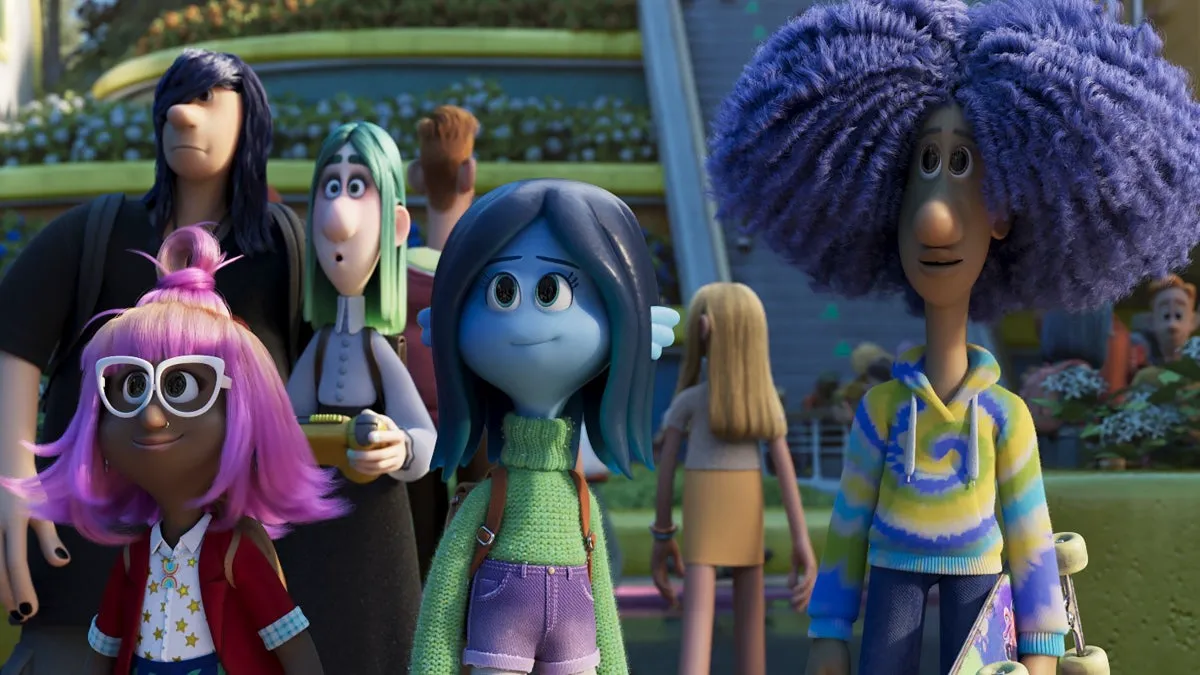
Still from “Ruby Gillman, Teenage Kraken”
A Teenage Girl’s Sea Journal
Most underwater stories center around a marine odyssey (“Finding Nemo,” “Shark Tale”). “Ruby Gillman” veers off the beaten path, offering a teen drama about the kraken-mermaid conflict.
Ruby struggles to fit in, not only as a teenage girl but also as a sea creature, and the dazzling new girl, Chelsea, only exacerbates her insecurities. The girls’ friendship begins with Ruby’s envy on one side and Chelsea’s ulterior motives on the other. While Chelsea’s ambiguity is evident from the promotional materials, the film manages to hold the audience’s attention through its characters, and not just the main ones.
“Ruby Gillman” is a film about embracing otherness (both your own and that of others) and finding connections between generations. Self-esteem issues plague not only Ruby but also Agatha, who also had disagreements with her mother.
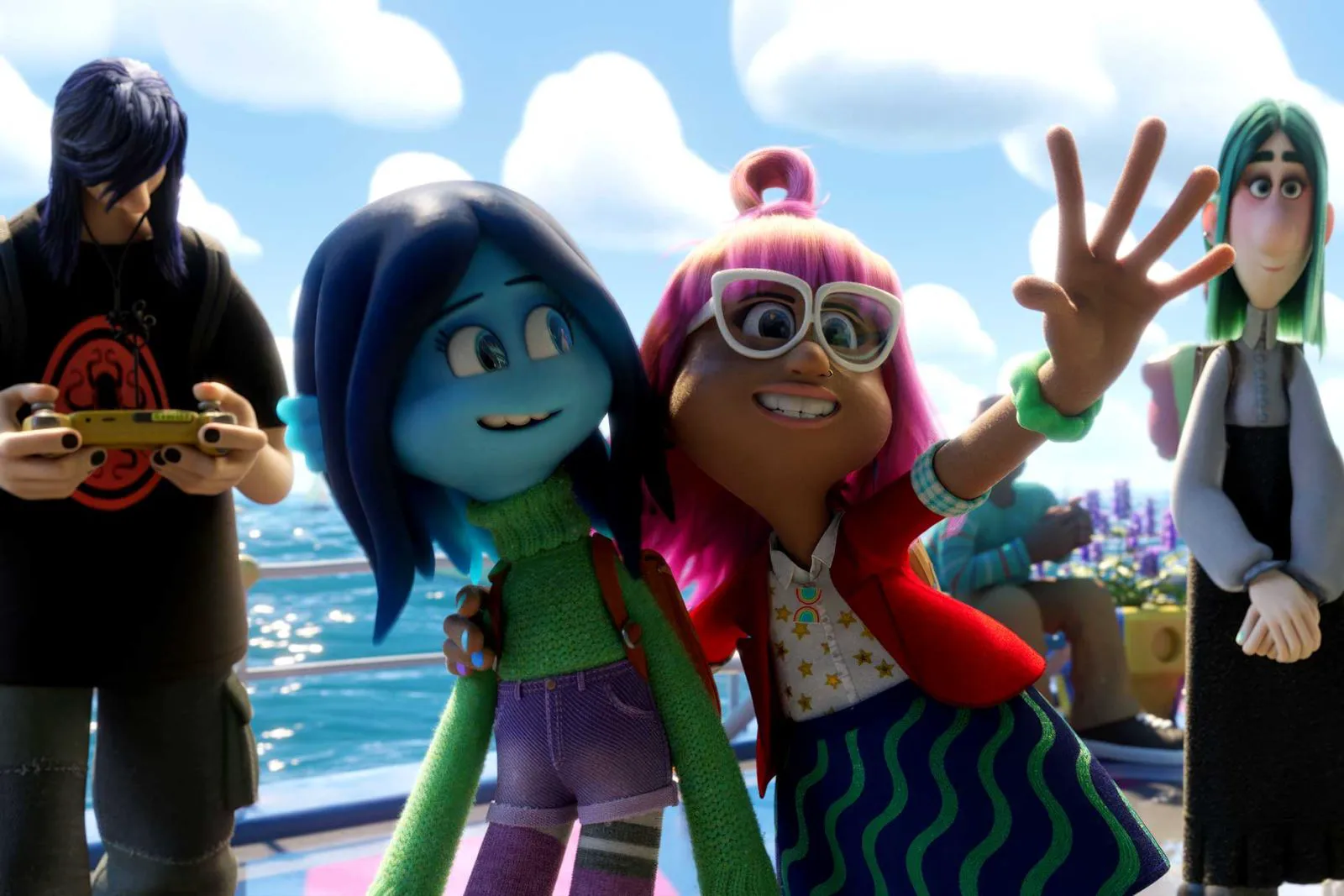
Still from “Ruby Gillman, Teenage Kraken”
Corporate Wars: What’s the Connection?
The central characters’ personas evolve from the studio’s main theme: subverting fairy-tale tropes. In “Shrek,” an ogre sets out to rescue a princess, while Prince Charming is consumed by vanity. Here, the antagonist and protagonist also switch roles: mermaids are evil, and krakens are good.
The ideological conflict can also be compared to the rivalry between DreamWorks and Disney. The former makes stories about awkward monsters, while the latter focuses on beautiful princesses. Chelsea is no Ariel, despite her resemblance. She is cunning, sly, and will do anything to achieve her goals. “Ruby Gillman” will be remembered as a film with an evil mermaid, and the competition is fueled by the release of the live-action remake of Disney’s classic animation in the same year.
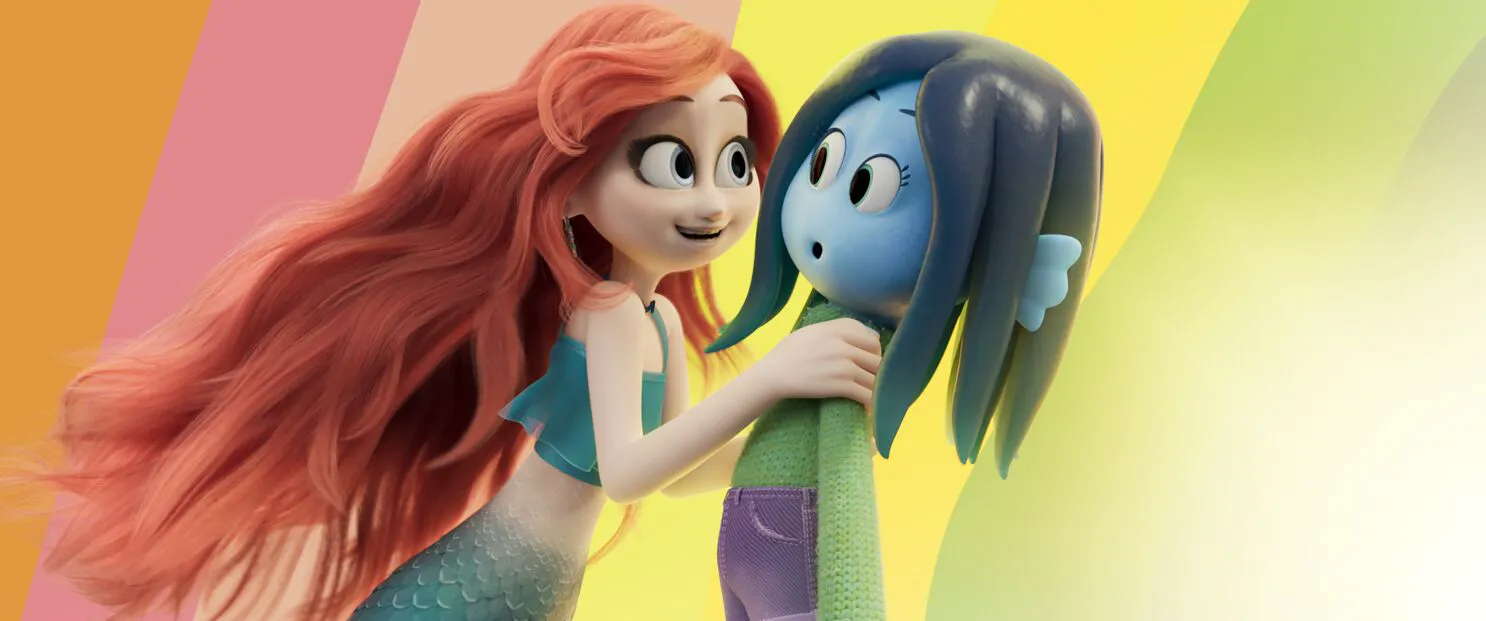
Still from “Ruby Gillman, Teenage Kraken”
“Ruby Gillman” Animation Has Its Own Style
The animation in the film stands out from DreamWorks’ previous works, such as “Puss in Boots: The Last Wish” and “The Bad Guys.” “Ruby Gillman” doesn’t try to imitate “Spider-Man: Into the Spider-Verse”; it has its own distinct style. Oceanside is dominated by acid colors: orange, yellow, bright blue, and crimson. The underwater kraken kingdom seems to be illuminated by neon lights.
The creators also strive to emphasize the characters’ personalities. For example, krakens are more fluid than ordinary people. They also reflect emotions: in one scene, Ruby is anxious, and the world around her is distorted by waves.
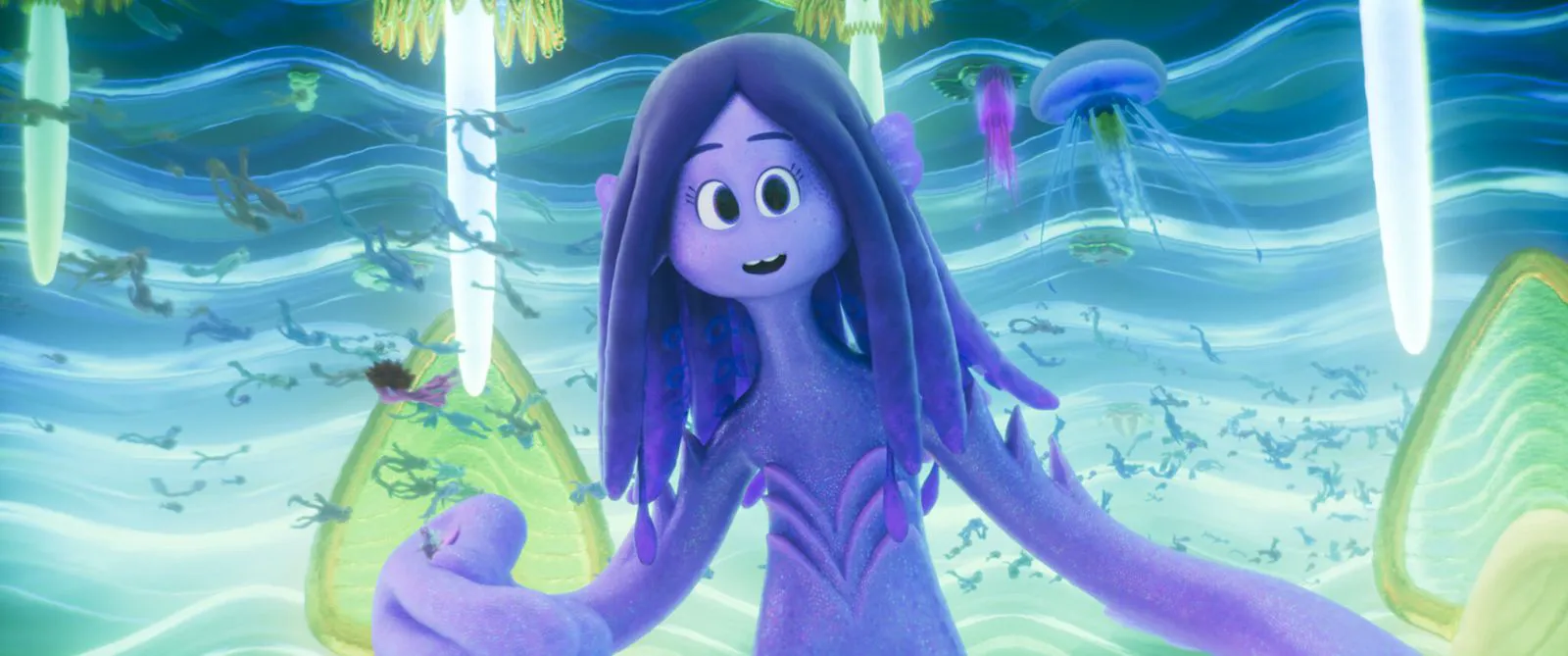
Still from “Ruby Gillman, Teenage Kraken”
But the Underwater World Is Quite Monotonous, and the Confrontation Lacks Scale
Most of the underwater scenes in the film take place in darkness, with only the krakens themselves glowing. It’s clear that there are few inhabitants at those depths, and the creators of “Ruby” use this to their advantage, trying to hide the lack of budget. Mainly, you can see whales and jellyfish on the screen, but there is little interaction with them. Compared to the recent “Luca,” the world-building is severely lacking: after watching “Ruby,” you don’t feel like buying tickets to Oceanside; it’s a standard coastal town, unlike Portorosso.
The movie poster features many krakens and mermaids, but this is a marketing ploy that deceives expectations. The war between the two species is only talked about. What is shown is a local skirmish: a showdown between one mermaid and three krakens, and only at the very end. The fight is not exciting; the underdeveloped graphics prevent you from feeling like you’re in the middle of the battle. “Ruby Gillman” lacks battles like those in “The Sea Beast,” where the battles on Netflix were on par with “Pirates of the Caribbean.”
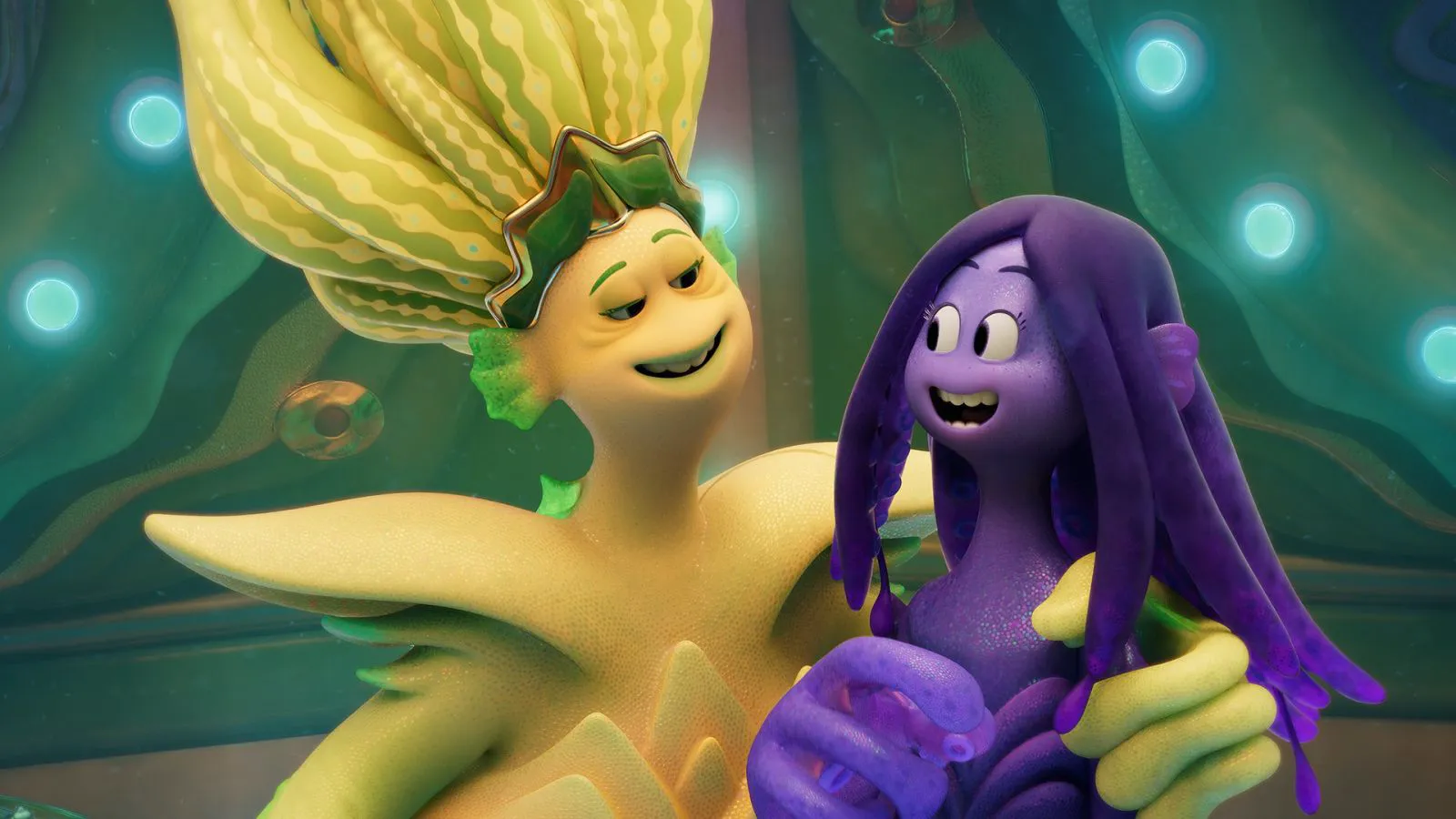
Still from “Ruby Gillman, Teenage Kraken”
Humor Drowns in Unnecessary Storylines
Speaking of pirates, you want to empathize more with Captain Gordon Lighthouse, Ruby’s dad, younger brother, and uncle — Arthur, Sam, and Brill — the supporting characters are more vibrant than the protagonists. The film’s humor is based on the men’s carefree attitude: hunting sea monsters, corking ships in bottles, and playing dodgeball with friends.
The characters even get into a separate adventure, but the bonus level has a negative impact on the plot. It seems the creators never figured out what story they wanted to tell. Everything is mixed up: the adventures of unsuccessful sailors, the conflict of generations, the confrontation between krakens and mermaids, and the hardships of growing up. And nothing can fit into the short runtime of 91 minutes.
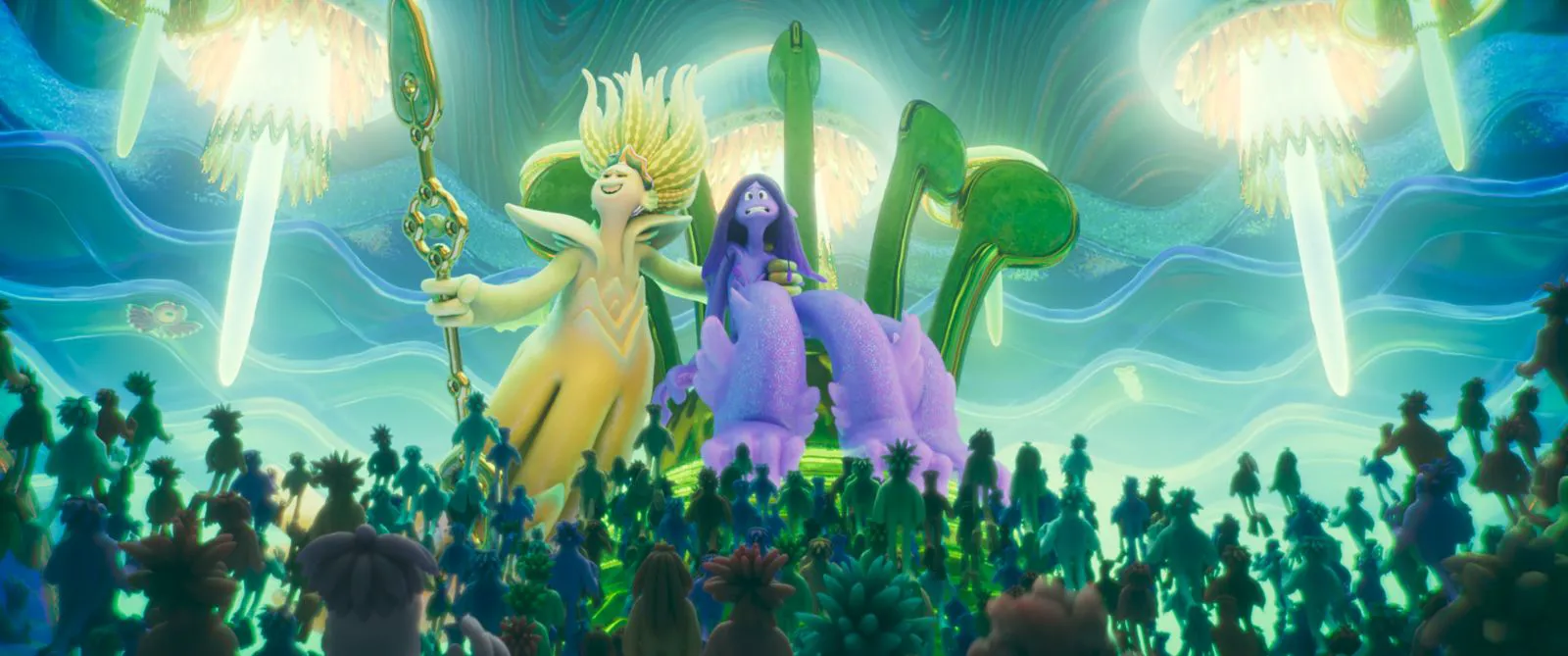
Still from “Ruby Gillman, Teenage Kraken”
The Movie Feels Derivative
“Ruby Gillman” is the company’s first animated film with a female protagonist, according to director Kirk DeMicco in an interview. But that’s not entirely true; “Monsters vs. Aliens” came out earlier. The films are similar: the main characters can grow in size, and the plot centers around a confrontation between two species. Overall, while watching “Teenage Kraken,” you constantly want to compare it to other films, which hardly benefits the movie. For example, the core is taken from “Turning Red,” and the image of Captain Gordon Lighthouse is reminiscent of “Luca.”
As a result, “Ruby Gillman” looks like a standard studio animated film with established and properly functioning algorithms. The animation has its advantages: originality, good humor, and its own style. But the disadvantages largely outweigh them: the derivative plot and the monotonous underwater world. We doubt that Ruby herself would like such a movie: straight-A students don’t copy.